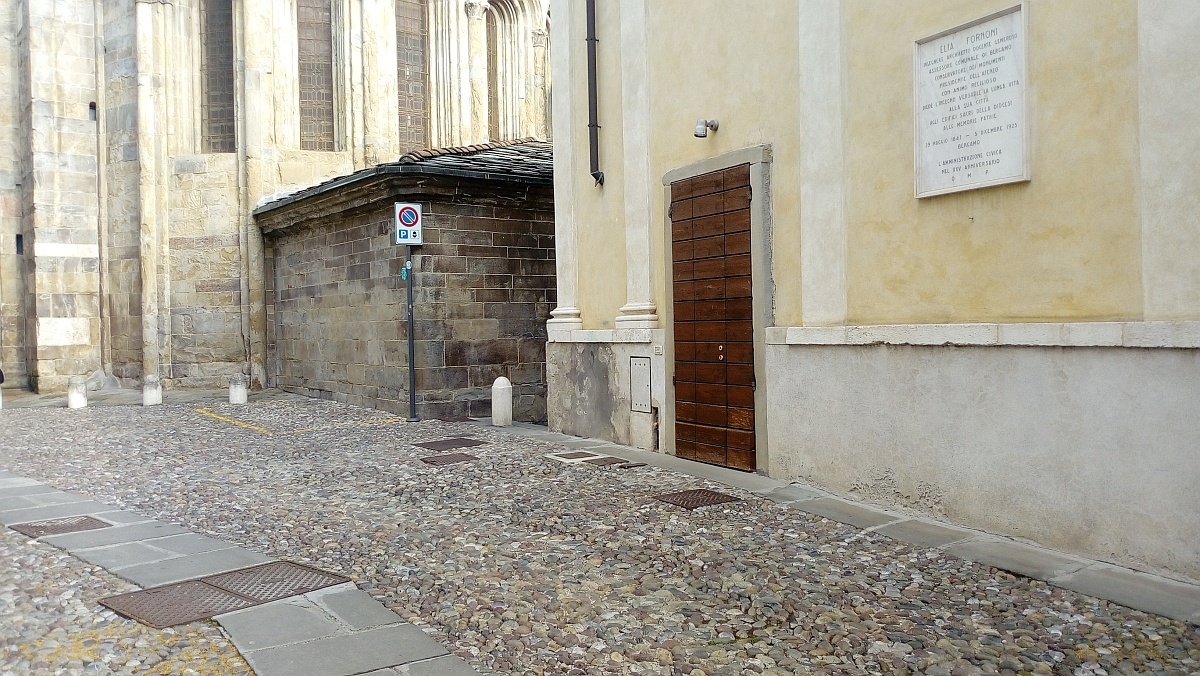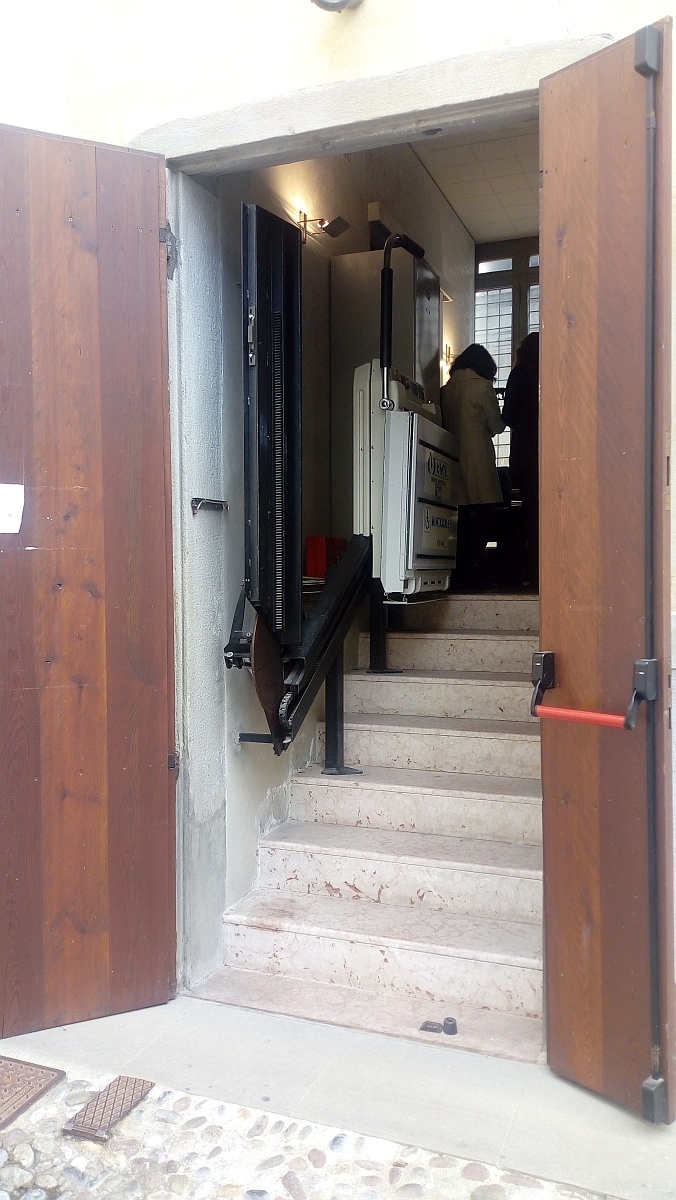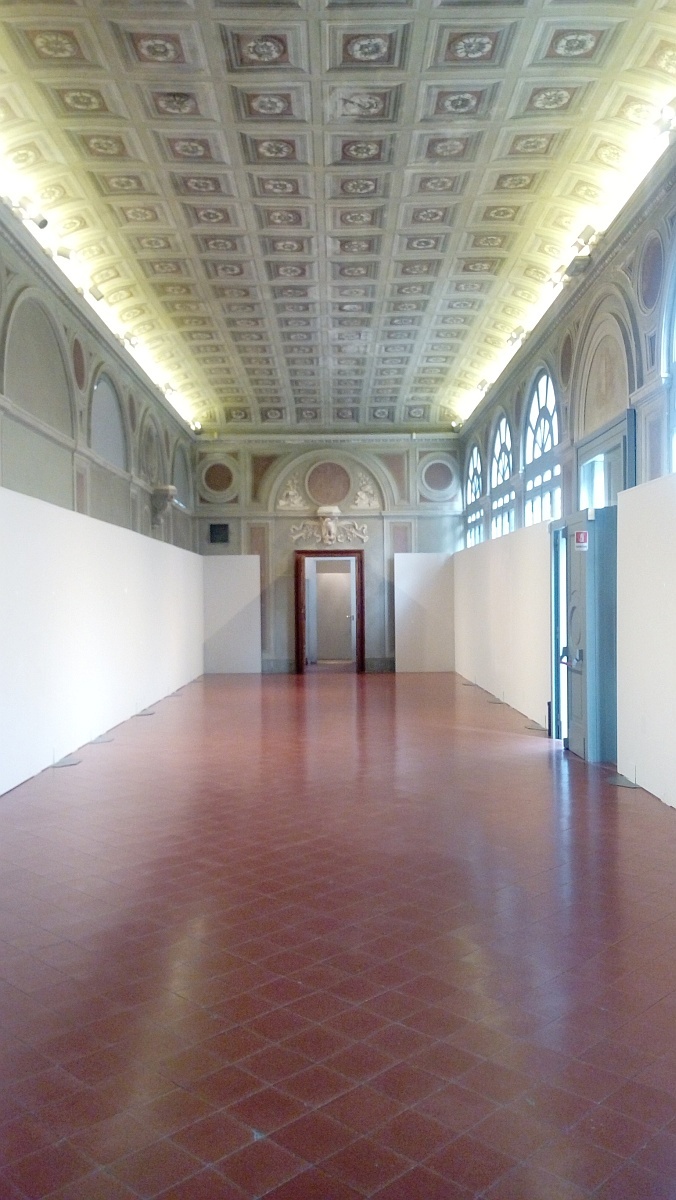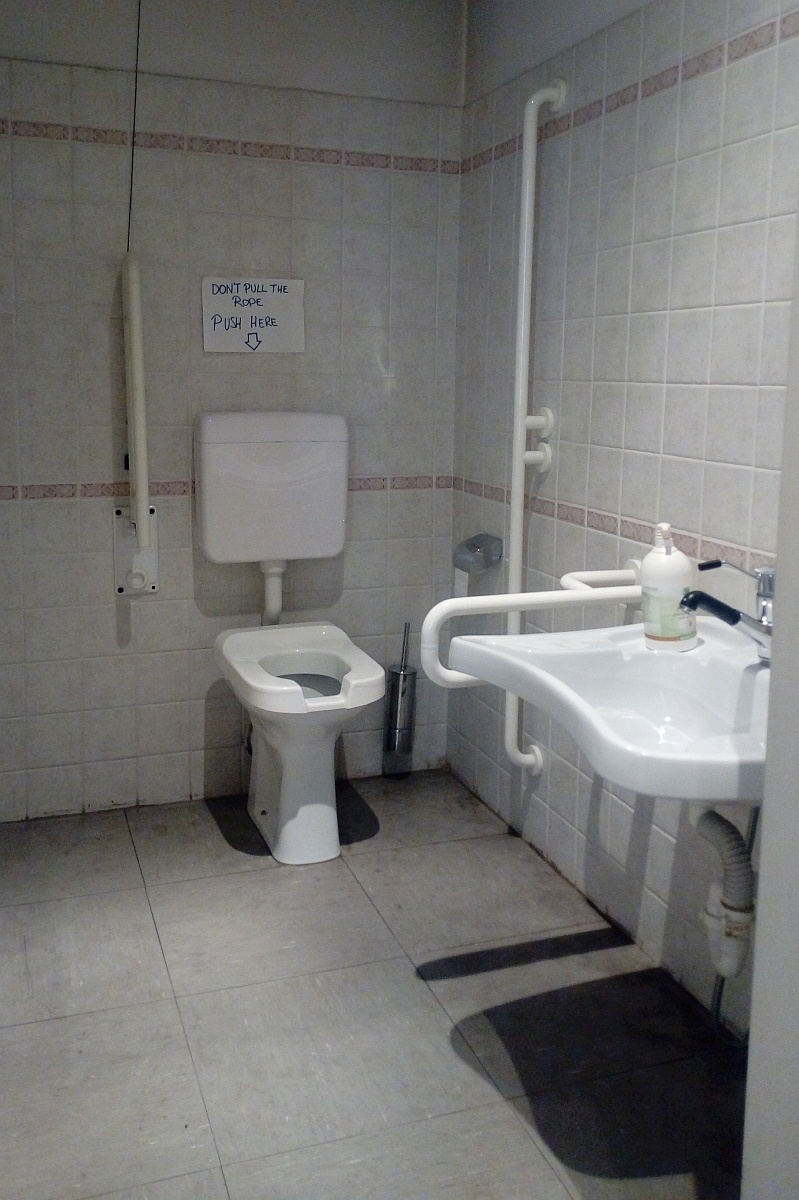This building has hosted the Athenaeum (“Ateneo”) of Science, Literature and Arts for more than one century, starting from the year 1818, and was previously used as “lapidario”, collecting the excavated material. Surely it didn’t fear humidity: it was built over the “Fontanone Visconteo”, a water reservoir dating back to 1342 with a capacity of 22.000 hectolitres, supplied by the “Acquedotto dei Vasi” water main in Castagneta, which has been used for centuries to draw water and as a water reservoir in case of siege.
The near Piazza Mercato del Pesce (“Fish Market Square”) demonstrates that this place was used to carry out business thanks to the presence of the “Fontanone” fountain. The well’s mechanism is so accurate that you can operate the water-pumping lever even today!
The “Athenaeum of Science, Literature and Art” was established after a Napoleonic decree in 1810 and merged the ancient Accademia degli Eccitati and the Accademia degli Arvali (gathering literature scholars and agriculture and economics academics, respectively).
After being temporarily hosted inside the ex refectory and other rooms of the Sarpi High School Palace, in Piazza Rosate (Città Alta), the Athenaeum settled in the near hall of the Civico Museo (Piazza Duomo) in 1818 and remained there till 1935.
From the outside, you can see a facing-ramps marble staircase leading to the entrance of the Athenaeum’s great hall. Underneath it, you can spot the fountain’s opening and an ancient plaque remembering the names of customers and constructors. Currently, the building is used to host public events and temporary exhibitions.
Out of curiosity
Today the Athenaeum is used to promote science, literature and art, as well as to safeguard the memories of Bergamo’s territory. The headquarter has been located in via Tasso since 1959, in Lower Bergamo, near the Palazzo della Prefettura and the Palazzo della Provincia: it arranges conferences and meetings, opening its modern and ancient library to researchers.
The Ateneo consists of three section or Classes: Moral and Historic Sciences, Physical and Economical Sciences, Arts and Literatures. It curates and carries out the printing of “Acts”, “Studies”, “Quaderni”, “Album” and “Fonti” and maintains exchange relations with numerous Academies and Cultural Institutions both in Italy and abroad.
This building has hosted the Athenaeum (“Ateneo”) of Science, Literature and Arts for more than one century, starting from the year 1818, and was previously used as “lapidario”, collecting the excavated material. Surely it didn’t fear humidity: it was built over the “Fontanone Visconteo”, a water reservoir dating back to 1342 with a capacity of 22.000 hectolitres, supplied by the “Acquedotto dei Vasi” water main in Castagneta, which has been used for centuries to draw water and as a water reservoir in case of siege.
The near Piazza Mercato del Pesce (“Fish Market Square”) demonstrates that this place was used to carry out business thanks to the presence of the “Fontanone” fountain. The well’s mechanism is so accurate that you can operate the water-pumping lever even today!
The “Athenaeum of Science, Literature and Art” was established after a Napoleonic decree in 1810 and merged the ancient Accademia degli Eccitati and the Accademia degli Arvali (gathering literature scholars and agriculture and economics academics, respectively).
After being temporarily hosted inside the ex refectory and other rooms of the Sarpi High School Palace, in Piazza Rosate (Città Alta), the Athenaeum settled in the near hall of the Civico Museo (Piazza Duomo) in 1818 and remained there till 1935.
From the outside, you can see a facing-ramps marble staircase leading to the entrance of the Athenaeum’s great hall. Underneath it, you can spot the fountain’s opening and an ancient plaque remembering the names of customers and constructors. Currently, the building is used to host public events and temporary exhibitions.
Out of curiosity
Today the Athenaeum is used to promote science, literature and art, as well as to safeguard the memories of Bergamo’s territory. The headquarter has been located in via Tasso since 1959, in Lower Bergamo, near the Palazzo della Prefettura and the Palazzo della Provincia: it arranges conferences and meetings, opening its modern and ancient library to researchers.
The Ateneo consists of three section or Classes: Moral and Historic Sciences, Physical and Economical Sciences, Arts and Literatures. It curates and carries out the printing of “Acts”, “Studies”, “Quaderni”, “Album” and “Fonti” and maintains exchange relations with numerous Academies and Cultural Institutions both in Italy and abroad.
RAGGIUNGERE:
Parcheggi:
a 50 metri (piazza Rosate): parcheggio pubblico riservato a residenti e privo di posti auto riservati e con pavimentazione in acciottolato possibilità di richiesta pass ai Vigili urbani).
a 300 metri (Piazza Mercato del Fieno): 1 posto auto riservato con pavimentazione in acciottolato.
Mezzi pubblici: a 230 metri si trova la Stazione Superiore Funicolare; una delle due cabine è accessibile con montascale.
Percorso pedonale di avvicinamento all'ingresso settentrionale (unico accessibile): in pendenza 7-8% su marciapiedi con pavimento in lastre di pietra; attraversaemento strada in acciottolato per raggiungere l'ingresso
ENTRARE:
Ingresso secondario accessibile tramite montascale per superare 7 gradini; il montascale, per essere utilizzato, va aperto sulla strada; la porta a due ante va aperta completamente per consentire il passaggio del montascale.
Montascale a piattaforma: portata 150 kg
VISITARE:
Spazio espsositivo in unico ambiente accessibile e in piano.
Usato solo per mostre temporanee.
USARE IL BAGNO:
Bagno accessibile presso l'ingresso: porta 88 cm con apertura esterna; spazio di manovra adeguato; altezza wc 51 cm, con maniglioni; altezza lavabo 81-75 cm, senza specchio.
VALUTAZIONE SINTETICA:
Persona con disabilità motoria: accessibile con accompagnatore
Persona con disabilità visiva: fruibile con accompagnatore.
Gallery
Attraversamento davanti all'ingresso.

Porta d'ingresso con montascale estraibile.

Spazio espositivo interno.

Bagno accessibile.
